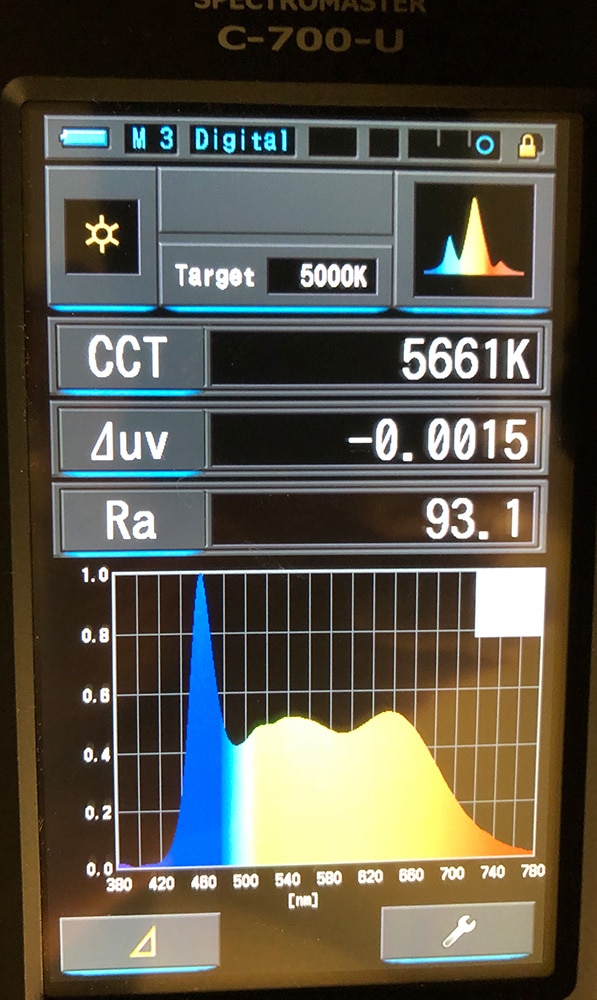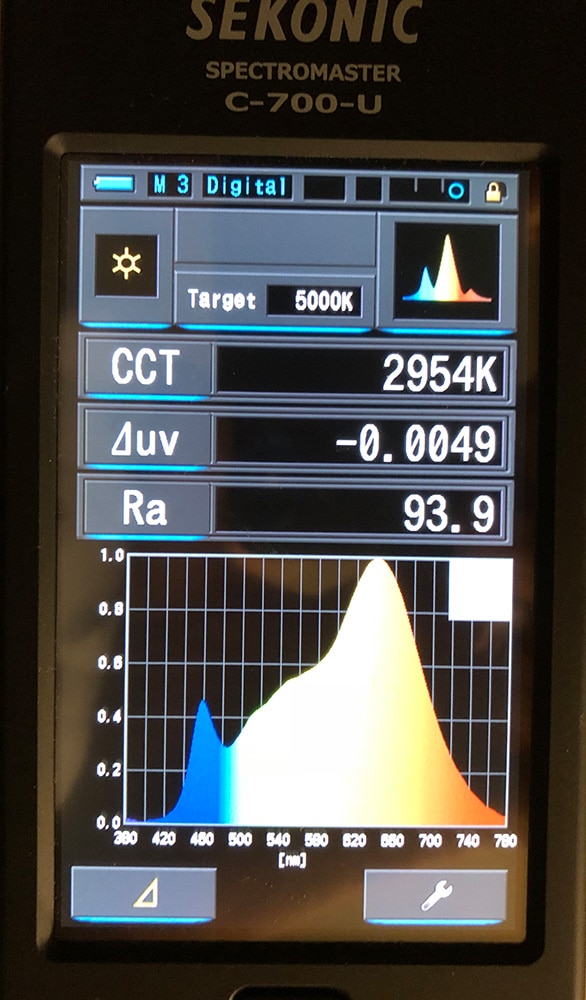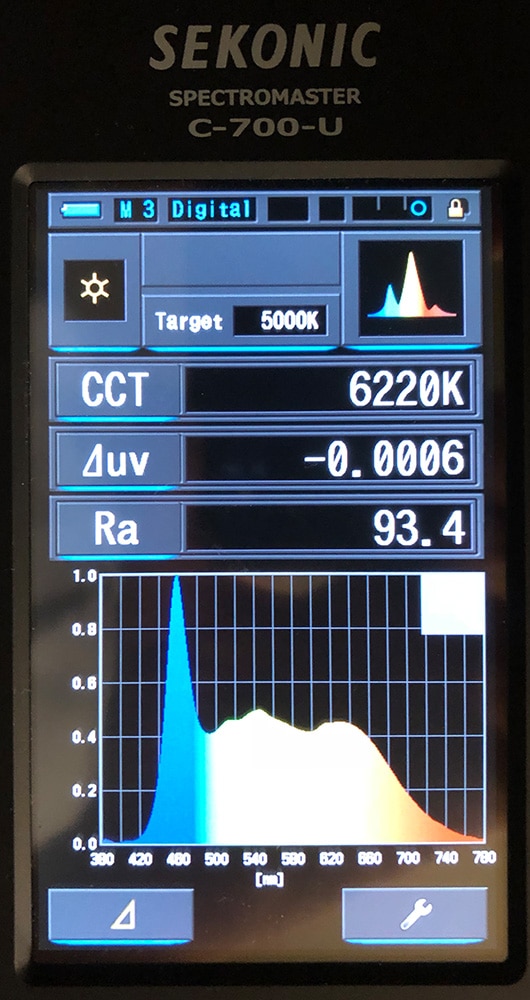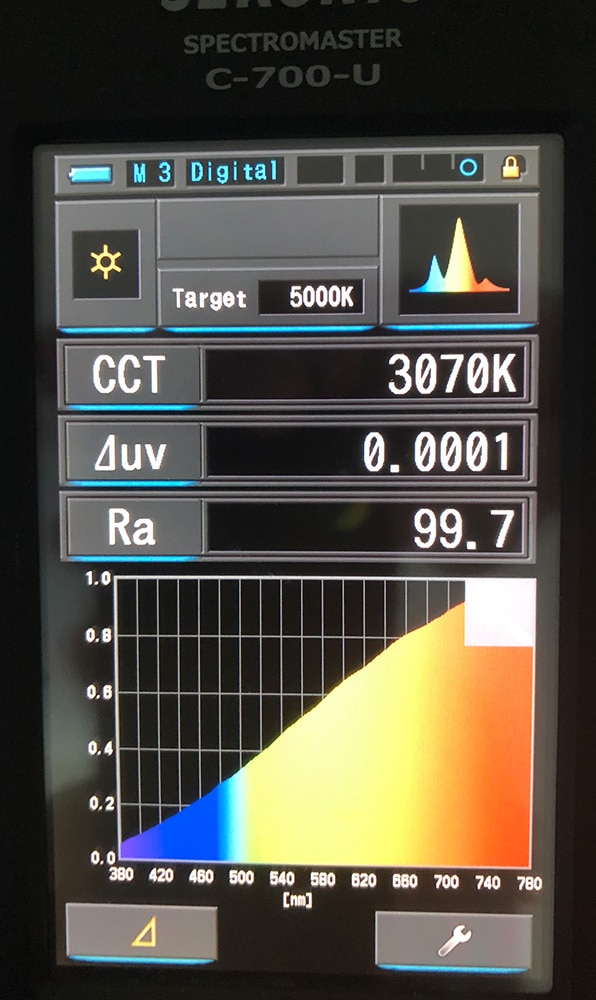The issue of the spectrum of the LED panels that I have been using for the autofocus tests has arisen. In the interests of full disclosure, here are some plots and stats.
First, with the panels set to the 5500K setting that I’ve been using most of the time:
The blue excitation spike is visible. The CRI is a bit over 93, which is not bad. The actual color temperature is about 150 degrees Kelvin over what was set. The white point is very close to the black body arc, being slightly off in the magenta direction.
At 3000K, which I used for one of yesterday’s tests:
The actual color temperature is about 50 degrees lower than set. The blue spike is relatively smaller. The CRI has increased slightly, to almost 94, and the deviation from the black body curve remains small and in the magenta direction.
At 6000K, which was the other setting I used for yesterday’s tests:
The spike is bigger. The CRI is about halfway between the other two plots, the color temperature is about 200 degrees too high, and the white point is just about dead on the black body curve.
For comparison, here is an actual factual 3000K tungsten bulb:
For what it’s worth…




Seeing as you have a nifty spectromaster 700 is there any possibility of seeing how the glass in the lens alters the spectrum of light received. You often here the term Leica colours so lets see if there is any truth in that. I’ve toyed with getting a nana lambda to do something similar.
Still trying to get the Sekonic computer software to work well enough to download spectra.